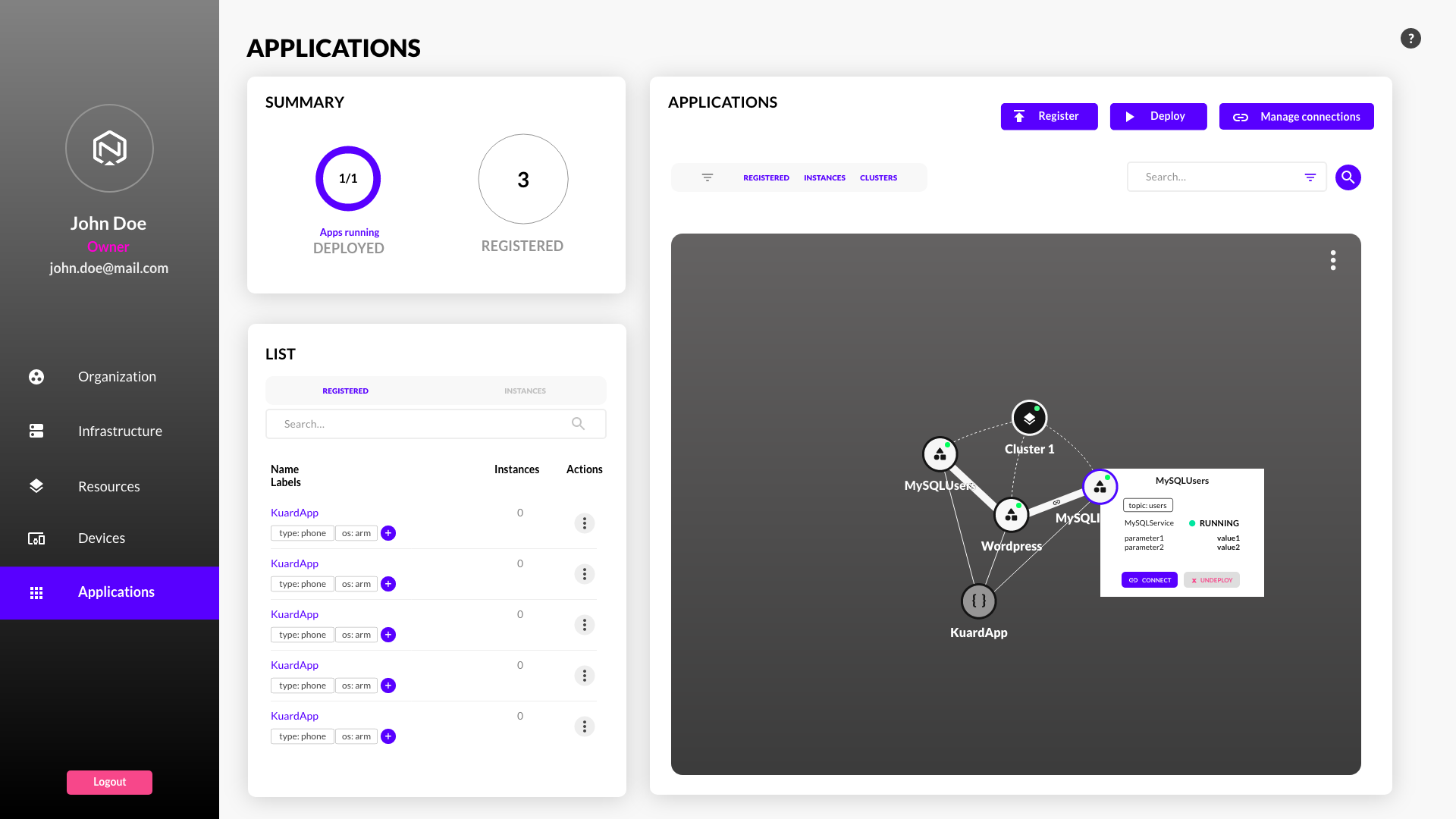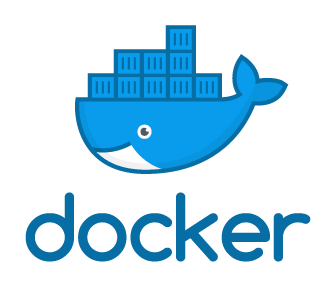NALEJ Mosaic OS/Platform: Software, Hybrid Cloud Services & Systems
Powering Hyperscale Edge Cloud 2.0
Secure. Dynamic. Programmable. Real-Time. Resilient.
NALEJ Single pane of glass
Reimagined Infrastructure, Application and Data Operations
NALEJ’s users can visualize the state and metadata of globally distributed operating environments, running applications, and make critical decisions that impact performance and end-user experiences in a unified web console

Application operations
Reduce application complexity, distributed monitoring, and secure endpoints with a zero-trust approach
Infrastructure operations
Explore infrastructure, plan for maintenance and capacity expansion, and control data under compliance policies
Visual UI and Command-line interface
Available for devops and developers to register and deploy applications
Actionable visuals
Outlining service connectivity and deployments at a glance
Secure applications
Zero-trust approach marking public endpoints to establish appropriate security policies
Explore and provision
An inventory of Edge infrastructure and computing resources
Plan capacity
Based on hardware, connectivity, and performance to do more with less
Control distributed resources
Using geo-tags and labels drive internal governance and compliance (data-privacy regulations like GDPR)
NALEJ Smart scheduler
Intelligent optimization
A global monitoring and orchestration system that uses AI Operations to continuously learn about infrastructure and application utilization to optimize deployments and to provide high-performance digital experiences

Developers
Developers and DevOps are able to monitor, react to, and alert stakeholders to every aspect of an Edge applications lifecycle
Operators
IT operators use resource profiling, static and runtime configurations to automate the deployment lifecycle
Monitor
every aspect of application deployments from containerized microservices to each individual or grouped set of distributed infrastructure nodes
React dynamically
to move services closer to users or data for faster processing, or turn off redundant services for higher efficiency and cost savings
Alert and notify
anomalies or changes to a default deployment to the web console or external alert management tools
Profile
application and infrastructure behavior with AI Operations to predict long-term patterns
Configure
requirements for compliance based on runtime rules for all deployments or manage configurations on a per deployment basis
Automate
the deployment and lifecycle management of applications based on profiled application, machine, and user behavior
NALEJ Application manager
Application lifecycle management
An intelligent orchestration system that enables the management of complex multi-service applications across globally distributed infrastructure

NALEJ’s capabilities
· Security is a core, configurable, multi-tier element of the application manager
· Networks enable peer-to-peer encryption between discrete microservices, composed applications, and distributed infrastructure
· Optimized deployment based on available computing capabilities such as CPU, memory, and storage
Developers will easily
Compose Edge applications
To easily connect and distribute across diverse global infrastructures
Register compositions
To a catalog that visually represents distributed deployments as a graph
Deploy applications
With the a click of a button or modify runtime parameters to suit unique development, testing, or production requirements
NALEJ Infrastructure manager
Edge computing resource management
Connect globally distributed, diverse infrastructures that include Cloud (AWS, Azure, Google), data center, virtual or bare-metal machines, IoT gateways, and sensors into a mesh of Edge computing resources
NALEJ’s capabilities
· Cloud and data center infrastructure is easily connected to create multi-cloud Edge computing environments
· Bare Metal devices and servers are ideal for specialty computing resources like graphics processing units (GPU) and field programmable gate arrays (FPGA)
· IoT devices and sensors are indirectly proxied and authenticated using embeddable API access keys

Operators will easily
Register servers and machines
to enable capacity, capability, and connectivity profiling
Cluster and group
co-located or nearby resources to support complex high-performance application deployments
Manage connected infrastructure
by creating maintenance programs with unified log metrics and alerting
AI Operations Built-in
NALEJ uses AI Operations in three different ways for platform operations efficiency
AI Operations to provide best-fit architecture
NALEJ uses AIOps to securely manage and optimize customers’ distributed fabric/mesh and provide a best-fit architecture based upon available capabilities, the workloads being managed, and the optimized operational parameters defined (most secure, most performant, most cost effective)
AI operations Pre and Post processing of data
NALEJ uses AIOps in both the pre and post processing of data, optimized by the platform and our Edge data management capabilities. The autonomous vehicle which requires ten minutes of persistent, streaming data will require sophisticated capabilities to share and distribute Edge data based upon a broad range of requirements
Enabling of AI services
NALEJ enables any AI service to be deployed and used as an ‘overlay’ to existing applications or services. As an example, a drone providing streaming video feeds into an analytics application running on the Nalej platform, can be further optimized with an AI services overlay fused with the original application and data. Any non-AI application can now be optimized quickly, efficiently and cost effectively
Key capabilities
Intelligently deploy and manage your applications and microservices across the Edge, network and multi-cloud
SINGLE PANE OF GLASS
Web UI
A single interface for Developers and DevOps to collaborate
- View inventory and computing resources
- Register composed Edge applications
- Deploy application instances with runtime configurations
Command-Line Interface
Use any OS terminal for programmatic access to platform functions.
- Query detailed system information
- Export logs for analysis
- Execute bulk action commands
HTTP/gRPC API
- Provide direct access to platform functions.
- Fully integrate CI/CD pipelines
- Create a completely custom UI/UX
- Automate enterprise user management
IoT SDK
Seamlessly integrate IoT applications and devices.
- Proxy unmanaged device life-cycle
- Authenticate devices to send/receive data to Edge applications
- Unlink devices with irregular behavior
Infrastructure manager
Application manager
Inventory Management
All registered virtual and bare metal assets in one location.
- Register assets with a local executable
- Profile capability, capacity, and connectivity
- Organize into clustered computing resources
Geofencing
Maintain and control where processing occurs and sensitive data is stored.
- Tag bare metal servers with a location
- Use tags for creating networking and deployment rules
- Easily create audits for regulatory or internal compliance
Resource Management
Cluster and expose federated infrastructure as Edge computing resources ready for application deployment.
- Deploy or connect to existing Kubernetes
- Support single-node container life-cycle
- Build capacity management and maintenance programs based on usage
Store Replication
Ensures data is recovered in case of failure or for scaling
- Enables automated service rescheduling in existing cluster
- Enables cross-cluster rescheduling based on replication and data availability
- Designed for disaster avoidance
Catalog Management
Catalog of Edge deployable applications.
- Compose application deployments with an intuitive descriptor.
- Set default runtime values for push-button deployments
- Version manage changes
Secure Networking
Default P2P encrypted connectivity between micro services
- Application connectivity is not public
- Manage what application endpoints are publicly accessible
- Auto discovery and routing of replicated or recovered micro services
Cross-App Networking
Share common services across multiple applications.
- Dynamic service-to-service network connectivity
- Easily share backend database services
- Shared endpoints never exposed publicly
Unified Logging
One location for every log for every complex distributed edge applications.
- Search and filter logs directly from the web console
- Easily download log files for local analysis
- Use API and Command-Line Interface tools to automate or integrate logs with external systems
Smart Scheduler
Auto-pilot
Automated management of deployed application instances.
- Built-in high-availability scaling
- Reclaim redundant under-utilized services automatically
- Restart in case of unexpected shutdown
Multi-Cluster Replication
Configurable replication of services across multiple Edge clusters and nodes.
- Auto-deployment of services based on resource discovery
- Redeployment of application to adjacent clusters based on unexpected failure
- Disaster detection and avoidance
Smart Caching
Automated application state management based on distributed local storage.
- Application state continuity after unexpected restart
- Accelerate data processing based on local infrastructure capabilities and replication
- Caching for low latency and Service Level Agreement performance requirements
Infrastructure Constraints
Global and runtime rules for managing variable deployments.
- Create rules to map deployments to specialized infrastructure (GPU/FPGA)
- Enable dev/test/production environments based on runtime variables
- Enforce geofencing or other network segmentation constraints per deployment






